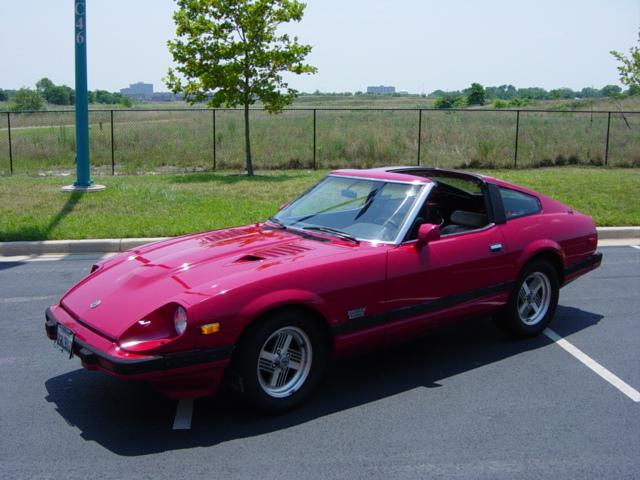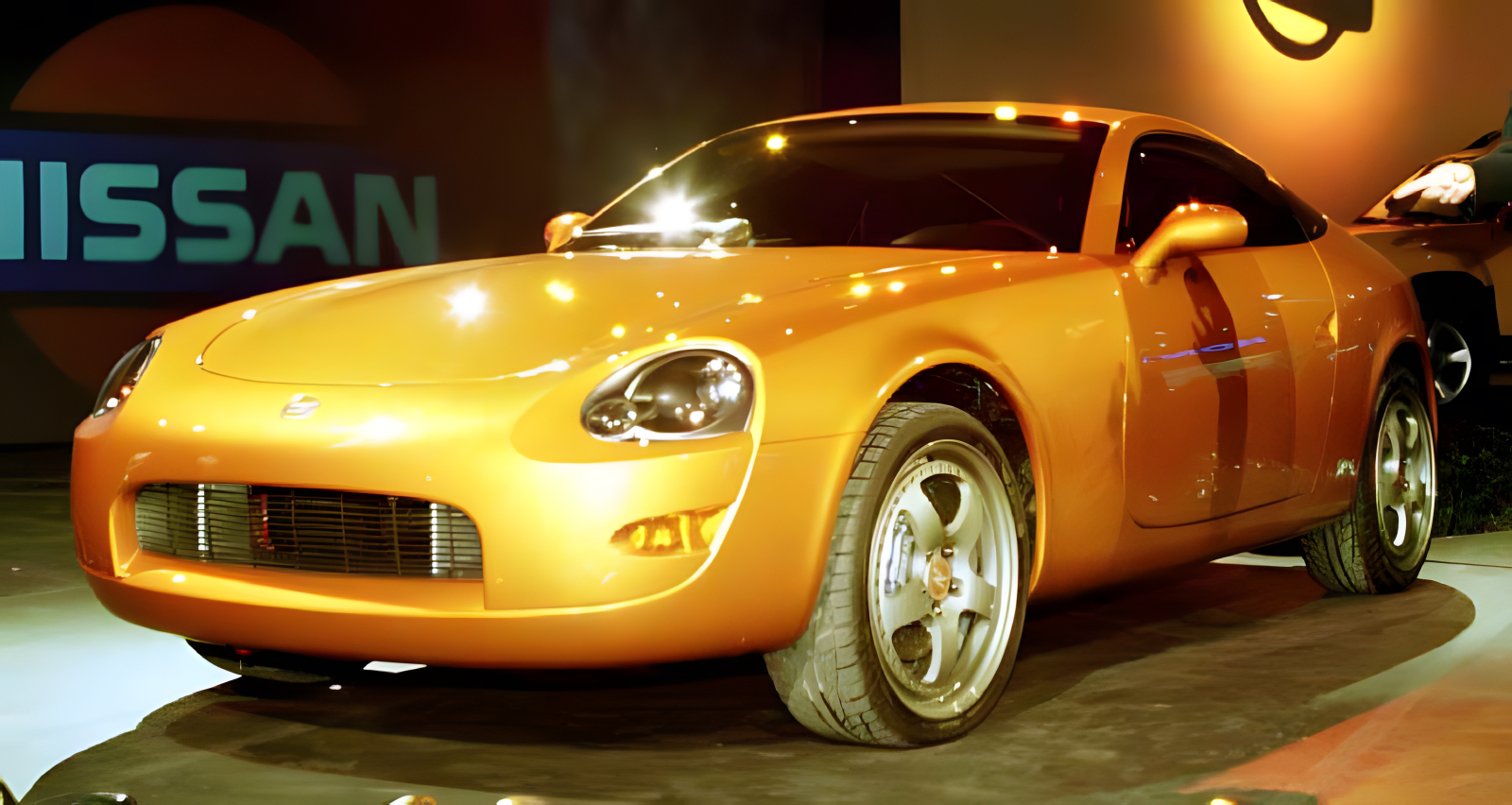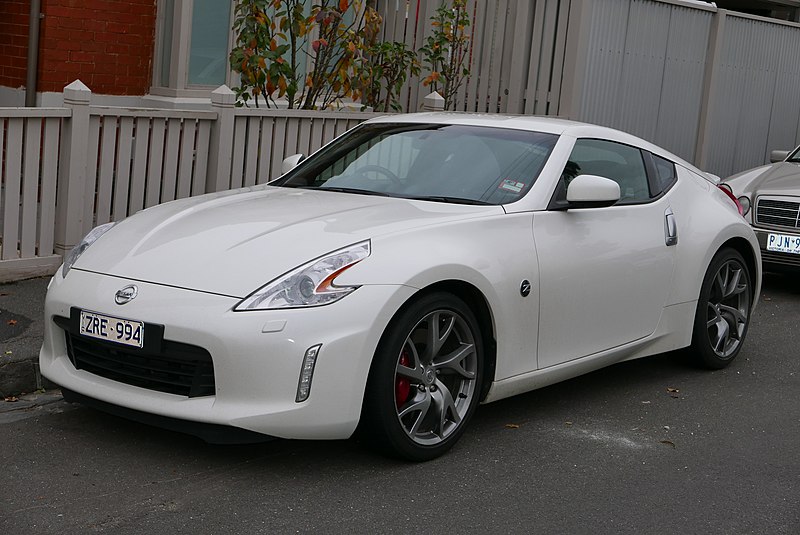Source: Avriette via Wikipedia CC BY-SA 3.0
Now in its second generation, Nissan maintained the 'Fairlady' label for the Japanese market, while the export market remained under the Datsun labelling. The 280ZX had no correlation whatsoever with the 280Z, though the 2.8 litre engine and 5 speed manual were carried over from the latter.
Increasing consumer demand for luxury saw the introduction of t-tops, leather seats and automatic climate control. In 1981, a turbocharged model was introduced, good for 180 hp.
So popular was the 280ZX that it won the Motor Trend's Import Car of the Year award in 1979 and went on for a record sales of 86,007 units during the first year.
300ZX (Z31)
In 1984, Nissan gave the Z-car a makeover which saw the debut of the brand's 3.0 litre V6 engine from the VG engine family in the 300ZX. These engines came with the options of VG30E naturally aspirated with 160 hp and VG30ET turbo with 200 hp or 228 hp outside the US thanks to longer cam duration and liberal emission regulations.
This third gen Z-car marked the retirement of the Datsun labelling for good, marketing all Z-cars in all markets under Nissan's labelling in 1985. Nissan made a minor tweak to the 300ZX with the inclusion of water-cooled turbo and smoked taillights.
In 1988, the engine was given a lower-inertia T25 turbo and a higher compression ratio, up from 7.8:1 to 8.3:1 to combat turbo lag. To further complement the changes, a special edition package, known as 'Shiro Special' (SS), was introduced. The package came with analog gauges, climate controls, stiffer anti-roll bar and springs, non-adjustable suspension, Recaro seats, viscous limited-slip differential and front lower lip spoiler.
300ZX (Z32)
The 3.0 litre V6 from the previous gen 300ZX was carried over to the fourth gen 300ZX, fortified with dual overhead camshafts (DOHC) and variable valve timing (VVT) which improved output to 222 hp in naturally aspirated form. The most mouth-watering prospect however had to be the turbo variant, now equipped with twin Garrett turbochargers and twin intercoolers that churned out 300 hp to the rear wheels under Super HICAS four wheel steering's supervision.
The Z32 generation 300ZX won several accolades from renown motoring magazines, including Motor Trend, Automobile Magazine, Road & Track and Car and Driver.
1993 saw the introduction of a convertible version for the first time in a Z-car. T-tops was standard feature on all 300ZX Z32 generation, though consumers can option the hardtops as well.
However, the 300ZX Z32 generation had to be a blot in the copybook as the mid-90s trend toward SUV and the depreciating Yen currency in relation to the US dollar put a lid on the car's US sales in 1996. Compounding matters were the price inflation, which saw a price tag of $30,000 at its release and $50,000 in its final year. The result? The end of Z-car sales in the US, but it lived on in Japan.
240Z Concept (1999)
With increasing interest in SUV in the US, Nissan shifted their focus onto SUV to keep them from being financially strapped. Despite that, Nissan wouldn't give up on the Z-car that easily.
During the 1999 North American International Auto Show, the 240Z Concept was launched. The concept was a bright orange two-seater with fastback roof, with a fully functional 2.4 litre KA24DE 4 cylinder with 200 hp. This eventually rekindled the love for Z-car among American public.
350Z (Z33)
After a hiatus from 1997, 2002 finally saw the return of Z-car in the form of the 350Z. It all began after Renault bought 44.4% of Nissan and Carlos Ghosn became CEO in 2001.
Ditching the 4 cylinder from the concept, it now featured a 287 hp 3.5 litre VQ35DE DOHC V6, the 350Z was launched in Japan on July 2002 and in the US on August 2002, with transmission option of a 6 speed manual or 5 speed automatic (automatic was down 13 hp). In 2004, a convertible was made available after initially only available as a hardtop.
In 2005, the 35th Anniversary Edition 350Z was launched, featuring improved output of 300 hp and a higher redline of 7000 rpm.
From 2007-2008 model year, the car featured a much improved 3.5 litre VQ35HR with dual intakes and 7500 rpm redline, increasing its output to 306 hp.
370Z (Z34)
Introduced on December 30 2008, the 370Z was marketed as a 2009 model year. Powering the 370Z is Nissan's 3.7 litre VQ37VHR V6 with power output ranging from 328 to 350 hp depending on market and variant.
The highlight of this sixth gen Z-car is the first production manual transmission with the ability to automatically blip the throttle on downshift, known as the SynchroRev Match. It simulates heel and toe downshift through array of sensors that monitor the shifter's position, wheel speed and engine speed. This ensures the rev is perfectly matched to prevent the rear driven wheels from locking up due to the shock generated by the driveline in response to the significant discrepancy in speed.
Nissan's innovative auto rev match function inspired other manufacturers to follow suit, notable examples including the C7 Corvette Stingray Active Rev Matching, Aston Martin V12 Vantage S AMSHIFT and Porsche's Sports Chrono Package on 2013 911.
References
.
| 







No comments :
Post a Comment